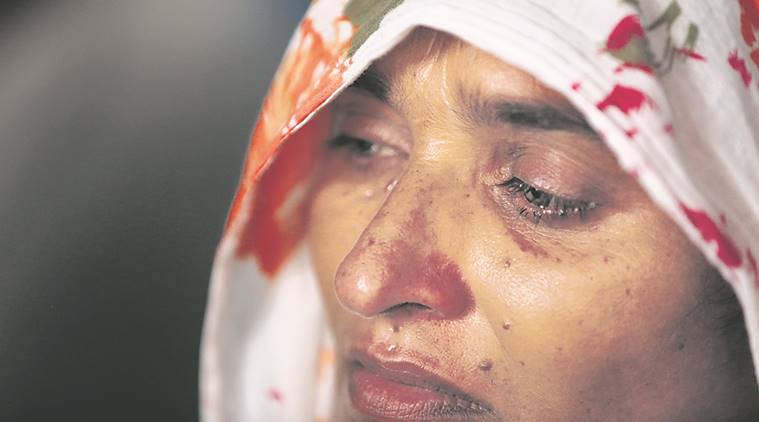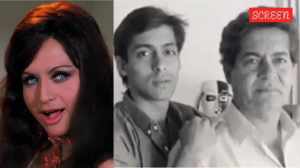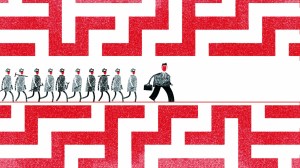FROM the station master and his staffers to a nearby post-master, to vendors at the platform, nobody appears to have seen anything at the Asaoti railway station in Faridabad where Junaid Khan bled to death after being repeatedly stabbed aboard a local passenger train on Thursday evening. The CCTV that looked on to the spot has been found tampered with, an official of the Government Railway Police (GRP) told The Sunday Express.
The only sign of the murder that evening at this sleepy station where few trains stop are the blood stains still visible on platform number 4, where Junaid’s body lay for some time.

With the incident snowballing, others at the station are reticent.
Station Master Om Prakash says the guard of the train, which was enroute from Delhi to Mathura, told him around 7.21 pm on Thursday that a “huge crowd” had gathered on platform number 4. “I immediately asked two of the staff present to see why the crowd had gathered. When they reached there, no one was present. The public might have taken away the body. I did not see anything, neither the body nor the crowd,” says Prakash.
The Station Master claims he was busy in the control room at the time. The control room, that is adjacent to platform number 1, is 200 metres from where the 15-year-old died. “I was busy. And from there, I could not have seen anything,” says Prakash. He also says “a goods train was stationed at platform number 1, making it impossible to have seen what happened”.
On receiving news of a crowd over the wireless, he adds, he sent over two staffers. According to Prakash, the two got late because they were “busy” too, “cutting off power to the goods train”. This is done to stop the train.
“By the time they reached, no one was present,” Prakash says.
Story continues below this ad
The Station Master didn’t give out the name of the staffers, adding that the two had completed their “eight-hour shift” and gone home.
Prakash claims that the guard of the passenger train from which Junaid was flung out would have seen the body when it crossed the spot. He also says no one from police came to enquire about the incident on Thursday.
Bhagwat Dyal is the post-master of the post-office located right opposite platform number 4. Dyal’s residence, on the post-office campus, is less than 50 metres from the spot of Junaid’s death. While Dyal claims to have asked “the only railway police officer at the station to call the ambulance”, he denies seeing either Junaid’s body or the accused.
“I asked the railway police officer to call the ambulance. He told me he had already done it,” Dyal says. Asked about the details, he says, “Actually, my daughter showed the video of the incident a day later. I did not see anything. I was relaxing at home and watching television. Usually the platform is crowded in the evening. I really did not think a murder had taken place at the spot.”
Story continues below this ad
He did not allow The Sunday Express to speak to his daughter.
Ram Sharan sells bhutta (corn) opposite platform number 4. He admits he is stationed there till 7 pm everyday, but on Thursday, left at 5 pm. “I did not see anything,” he asserts.
Sharan was the first person questioned by the police, on Friday evening. “They asked me if I had seen a knife or a T-shirt near the platform or near the bushes. I said I was not present during the incident,” says Sharan.
Ashok owns a kirana shop right opposite platform number 1. He is the only one who admits to at least seeing a body. He says he “saw a crowd of 200 people gathered at platform number 4”, and that there was no police present. Later, Ashok reveals, he saw “two bodies being rushed into the ambulance”. “Let me not lie. There was a crowd of 200 people. I did not go to platform number 4. But I clearly saw the crowd. There were two bodies and they were taken into an ambulance. Both the bodies had blood all over. I cannot tell the nature of the injuries. My wife was also with me,” Ashok says.
Story continues below this ad
On Saturday afternoon, three officials from the GRP, Ambala, conducting searches near the spot, said they were struggling to find eyewitnesses. “There is a CCTV camera right opposite the spot. The wire has been tampered with and it is non-functional. This could have provided key evidence. But we have found nothing during the search, we have not found a single eyewitness,” one official said.
Another officer added that the “scuffle” probably took place inside bogie number 3 of the train. “Usually bogie number 3 stands at the spot where the blood stain is.”

 Mother Saira on Saturday. (Express Photo by Tashi Tobgyal)
Mother Saira on Saturday. (Express Photo by Tashi Tobgyal)






